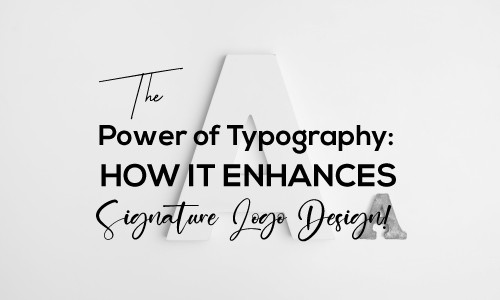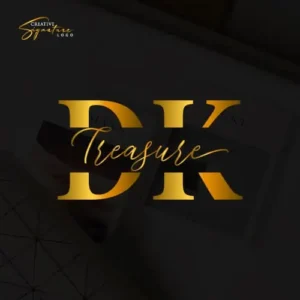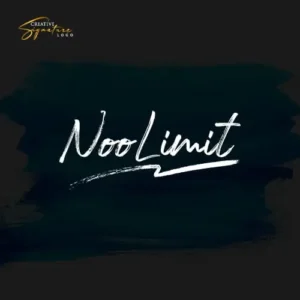Signature logo design is a powerful way for brands to make a lasting impression on customers. It’s the cornerstone of a brand’s identity and sets the tone for all marketing and communication efforts. Typography, or the art of creating visually appealing text, plays a crucial role in signature logo design. In this blog article, we’ll explore how typography can be used to create compelling signature logos and why it is so important.
Introduction to Typography
Typography is the art of creating visually appealing text. It involves the selection and arrangement of typefaces, fonts, line lengths, point sizes, and letter spacing to create a unique and recognizable look. Typography is an important part of any branding and marketing effort, as it can help brands stand out from the competition and make an impact on customers.
Typography is also a powerful tool for creating signature logos. It can be used to convey a brand’s story and values, as well as to create a unique and recognizable look. In this article, we’ll explore how typography can be used to enhance signature logo design and why it’s so important.
What is Signature Logo Design?
Signature logo design is the process of creating a logo that is a unique representation of a brand. It is usually composed of a wordmark, a symbol, or a combination of both. The goal of signature logo design is to create a logo that is easily recognizable and memorable.
A signature logo is more than just a symbol or a typeface. It is a visual representation of a brand’s story and values, and it conveys a message to customers and potential customers. A well-designed signature logo can make an instant impact on customers and can be the difference between success and failure for a brand.
What is Typography?
Typography is the art of creating visually appealing text. It involves the selection and arrangement of typefaces, fonts, line lengths, point sizes, and letter spacing to create a unique and recognizable look. Typography is an important part of any branding and marketing effort, as it can help brands stand out from the competition and make an impact on customers.
Typography can be used in a variety of ways, from creating logos and branding materials to designing websites and advertisements. It is a powerful tool for conveying a brand’s story and values, and it can be used to create a unique and memorable look for a brand.
History of Typography
Typography has been around for centuries, but it has evolved significantly over the years. Ancient typographers used simple tools such as quills and ink to create beautiful letterforms. With the invention of the printing press in the 15th century, typographers were able to create more intricate and detailed designs.
In the 19th century, the Industrial Revolution brought about a new era of typography. With the invention of new printing technologies, typographers were able to create more complex designs. The 20th century saw the rise of computers and digital typography, which allowed for even greater levels of creativity and flexibility.
Today, typography is a powerful tool for conveying a brand’s story and values, and it can be used to create a unique and memorable look for a brand.
Elements of Typography
Typography is composed of several elements, including typefaces, fonts, line lengths, point sizes, and letter spacing. Each element plays an important role in creating a visually appealing and recognizable look.
Typefaces are the basic design of a font. They include the shape, size, and style of the letterforms. Fonts are variations of typefaces that have different weights, widths, and slants. Line lengths are the horizontal lengths of each line of text, while point sizes are the vertical lengths of each line of text. Letter spacing is the space between each letter in a line of text.
Types of Typography
There are several different types of typography, including serif, sans serif, script, display, and decorative.
Serif typefaces are characterized by small lines or “feet” at the ends of each letterform. They are often used for body text, as they are easy to read. Sans serif typefaces are characterized by a lack of “feet” at the ends of each letterform. They are often used for headlines, as they are more modern and eye-catching.
Script typefaces are characterized by cursive-style letterforms. They are often used for invitations and other formal documents, as they are elegant and sophisticated. Display typefaces are characterized by bold and decorative letterforms. They are often used for logos and headlines, as they are eye-catching and attention-grabbing.
Decorative typefaces are characterized by unique and unusual letterforms. They are often used for logos and other branding materials, as they are unique and memorable.
Impact of Typography
Typography is an essential element of signature logo design. It can be used to convey a brand’s story and values, as well as to create a unique and recognizable look. The typeface, font, line lengths, point sizes, and letter spacing all play a crucial role in creating a successful signature logo.
The typeface is the basic design of the font, and it should be chosen carefully. It should be easy to read and should fit the brand’s story and values. The font is a variation of the typeface, and it should be bold and eye-catching. The line lengths and point sizes should be chosen carefully, as they can make a big difference in how the logo looks. And finally, the letter spacing should be chosen carefully, as it can make a big difference in how the logo looks.
Benefits of Using Typography in Signature Logo Design
Typography is an incredibly powerful tool for creating signature logos. It can be used to convey a brand’s story and values, as well as to create a unique and recognizable look. There are several benefits to using typography in signature logo design.
First, typography can help a logo stand out from the competition. By carefully selecting the typeface, font, line lengths, point sizes, and letter spacing, a logo can be distinctive and memorable. Second, typography can help a logo convey a brand’s story and values. By carefully selecting the typeface, font, line lengths, point sizes, and letter spacing, a logo can communicate a brand’s story and values in an instant. Finally, typography can help a logo be eye-catching and attention-grabbing. By carefully selecting the typeface, font, line lengths, point sizes, and letter spacing, a logo can be bold and visually appealing.
Using Typography to Convey a Brand’s Story
Typography is a powerful tool for conveying a brand’s story and values. Carefully selecting the typeface, font, line lengths, point sizes, and letter spacing can help a logo instantly communicate a brand’s story and values.
For example, a modern and minimalist typeface can be used to convey a brand’s modern and minimalist values. A bold and decorative typeface can be used to convey a brand’s bold and adventurous values. A sophisticated and elegant typeface can be used to convey a brand’s sophistication and elegance.
By carefully selecting the typeface, font, line lengths, point sizes, and letter spacing, a logo can instantly communicate a brand’s story and values.
The Anatomy of Typography in Signature Logo Design
Typography is an essential element of signature logo design. Understanding the anatomy of typography can help designers create an effective and memorable logo.
The typeface is the basic design of the font. It should be easy to read and should fit the brand’s story and values. The font is a variation of the typeface and should be bold and eye-catching. The line lengths and point sizes should be chosen carefully, as they can make a big difference in how the logo looks. And finally, the letter spacing should be chosen carefully, as it can make a big difference in how the logo looks.
By understanding the anatomy of typography, designers can create an effective and memorable logo.
Choosing the Right Font for Your Brand
Choosing the right font for a brand’s signature logo is an important step in the design process. The font should be easy to read, bold, and eye-catching, and should fit the brand’s story and values. There are several things to consider when choosing a font, including style of the font, readability of the font, and legibility of the font.
The style of the font should match the brand’s story and values. For example, a modern and minimalist font can be used to convey a brand’s modern and minimalist values. A bold and decorative font can be used to convey a brand’s bold and adventurous values. The readability of the font should be considered, as it should be easy to read. The legibility of the font should also be considered, as it should be easy to recognize.
By carefully selecting the right font, designers can create an effective and memorable logo.
Tips for Making the Most of Typography
Typography is an essential element of signature logo design. Here are some tips for making the most of typography:
• Choose a font that is easy to read and fits the brand’s story and values.
• Choose a font that is bold and eye-catching.
• Choose a font that is legible and recognizable.
• Consider the line lengths and point sizes, as they can make a big difference in how the logo looks.
• Consider the letter spacing, as it can make a big difference in how the logo looks.
• Consider the style of the font, as it should match the brand’s story and values.
By following these tips, designers can create an effective and memorable logo.
Examples of Successful Signature Logo Designs
There are several examples of successful signature logo designs that use typography.
Apple’s logo is a perfect example of how typography can be used to create a unique and memorable logo. The bold and modern typeface helps to convey the brand’s modern and minimalist values. The letter spacing is carefully chosen to make the logo easily recognizable.
Nike’s logo is another example of how typography can be used to create a successful logo. The bold and modern typeface helps to convey the brand’s bold and adventurous values. The letter spacing and line lengths are carefully chosen to make the logo easily recognizable.
These examples demonstrate how typography can be used to create effective and memorable logos.
Tools and Resources for Typography
There are several tools and resources available for typographers.
Adobe Typekit is a great resource for finding fonts for signature logos. It offers a wide selection of fonts from the world’s leading type foundries.
Fonts.com is another great resource for finding fonts for signature logos. It offers a wide selection of fonts from the world’s leading type foundries.
Font Squirrel is a great resource for finding free fonts for signature logos. It offers a wide selection of free fonts from the world’s leading type foundries.
Google Fonts is another great resource for finding free fonts for signature logos. It offers a wide selection of free fonts from the world’s leading type foundries.
These tools and resources can help designers find the perfect font for their signature logo.
Typography and Color Considerations
When creating a signature logo, it is important to consider both typography and color. Typography is the art of creating visually appealing text, while color is the art of creating visually appealing colors.
When choosing a typeface for a signature logo, it is important to consider the style of the font, the readability of the font, and the legibility of the font. When choosing a color for a signature logo, it is important to consider the psychology of color, the symbolism of color, and the impact of color on the human eye.
By carefully considering both typography and color, designers can create an effective and memorable logo.
Trends in Typography for Signature Logo Design
Typography is constantly evolving, and there are several trends in typography for signature logo design. Sans serif typefaces are becoming increasingly popular, as they are modern and eye-catching. Bold and decorative fonts are also becoming increasingly popular, as they are bold and attention-grabbing.
Hand-drawn fonts are also becoming increasingly popular, as they are unique and memorable. Custom fonts are also becoming increasingly popular, as they are unique and attention-grabbing.
By following these trends, designers can create an effective and memorable logo.
Conclusion
Typography is an essential element of signature logo design. It can be used to convey a brand’s story and values, as well as to create a unique and recognizable look. Carefully selecting the typeface, font, line lengths, point sizes, and letter spacing can help designers create an effective and memorable logo.
By understanding the anatomy of typography, choosing the right font, and following the latest trends, designers can create an effective and memorable logo. Unlock the power of typography and create an impactful signature logo today!






0 Comments